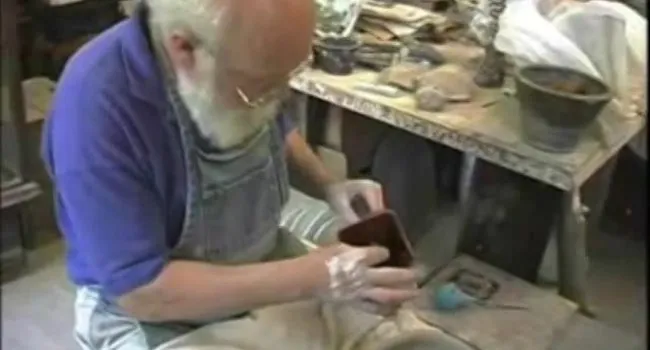Molding Clay
After the potter blends his clay, he must knead it in order to remove any lumps, soft areas and air holes, which might be contained in the product. If the clay hasn’t been kneaded properly, the clay will be more difficult to mold and the ultimate product may crack during the process of firing. Stephen uses the historical method of slicing the clay with a wire to test whether or not the clay is smooth clear through. He will knead the clay over and over, checking again and again until he is certain that there are no longer any imperfections in the clay. Next we see the clay being molded and shaped on the potter's wheel. Stephen demonstrates a technique called "coning" and creates the floor of the vessel, then continues working it into a cylinder. He "collars in" the neck and creates a pouring spout and later adds a handle after some of the water has evaporated. Next he will demonstrate decorating the buttermilk pitcher.


